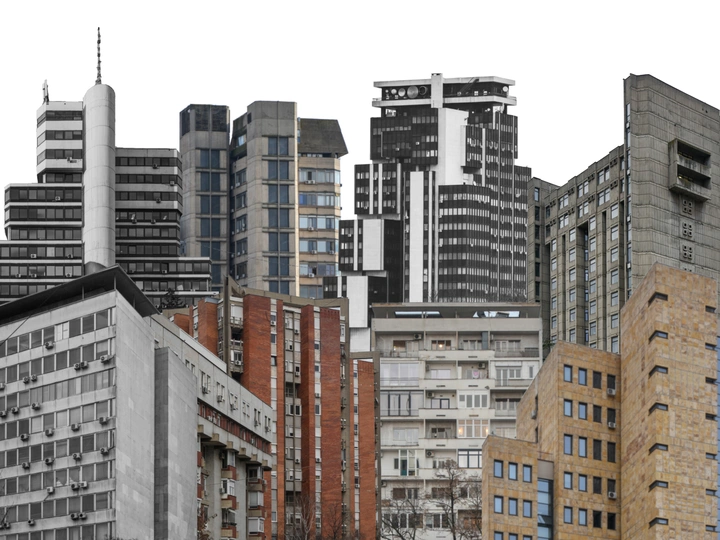Living Solidarity: Documenting Skopje modernism

I am currently a master’s student on the Faculty of Architecture in Skopje. I am a practising photographer with interest in film and new media. The projects that I have worked on in the past two years, mostly focused on documenting architectural heritage and have resulted in publications and exhibitions. My roles in the past and present projects have been, in a greater part, as a photographer and then as a student researcher and collaborator(practising architecture). Most of the projects were implemented by professors at the Faculty of Architecture in Skopje.
My contribution to the project ‘Forgotten masterpieces’ (FOMA) implemented by Architectuul and Contineo 2020, was the photographic documentation of 50 modernist buildings in Skopje and is one of the components I am applying with on this LINA call. As a part of that project I also participated in FOMA: Cultural Hackathon as a Digital champion. Through my recent projects I have further developed my photography and documenting skills and gained a better understanding of the importance of documenting the architectural heritage of the city and the necessity of raising awareness to the public. A great experience was also the project ‘Skopje: New industries on old locations’ which explored the repurposing of old industrial buildings to home new, creative industries. I am also proud to mention my participation in this year’s Egyptian pavilion at the Venice Biennale with the project ‘Nile as Laboratory’ which focuses on climate change and sustainable development along the river Nile. I took part as one of the student collaborators on the team from the Faculty of Architecture-Skopje.
I also have some experience in filmmaking in all stages from idea development to post production, having worked on both documentary and fiction films. However, I am interested in improving my abilities in this medium in order to better express stories connected to architecture. In general I am a critical thinker and always eager to learn.
The project consists of three components: photographic documentation of modernist buildings in Skopje (realised and published); essay-theoretical insight (realised, not published); portraits of buildings in form of short films (not realised and not published). The first component began as a collection of photographs made for Architectuul’s project ‘Forgotten masterpieces’. The collection of photographs, together with additional documentation, was firstly published on the site dedicated to the architecture of N. Macedonia (macedonia.architectuul.com) and secondly the photographs were published on my website (milagavrilovska.com). The archive of photographs consists of over 50 buildings from the modernist period in Skopje, with a focus on brutalist architecture built in the period of Yugoslavia and after the earthquake in 1963. The collection is meant to expand and furthermore serve the purpose of educating the public and raising awareness about the importance of preserving the architectural heritage. The digital archive was met with great enthusiasm and praise from professionals in the field but also in the broader public.
The second component, is a written short essay which addresses the importance of online archives, with thoughts on solidarity and a subtext on potential examples for rehabilitation and adaptive reuse of modernist buildings with energy efficient materials.
Link to the essay: https://shorturl.at/cltQ9
The series ‘Portraits of buildings’ which is unrealised, is meant to cover, in form of short documentary films, a few buildings from the modernist period in Skopje that have a need to be preserved and renovated. The films would go over the history of the building, its materiality, its functionality and collect ideas from professionals on the possibility of its adaptive reuse. If possible, talks with the original architect would be conducted. This series can be a medium which will help educate a greater mass of people about our architectural legacy.